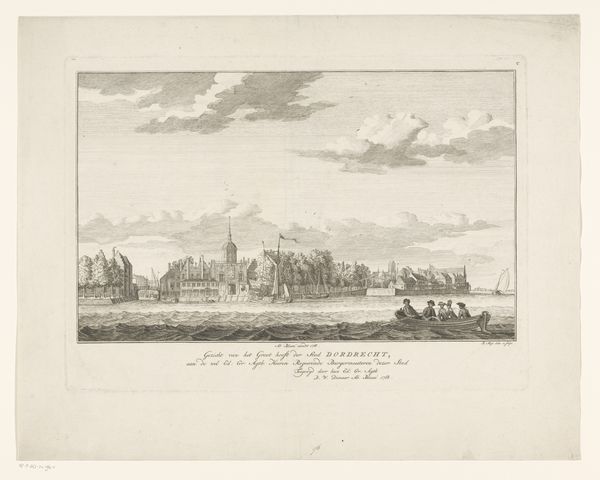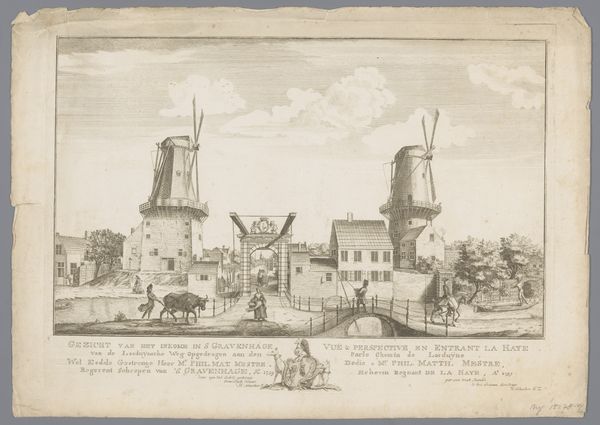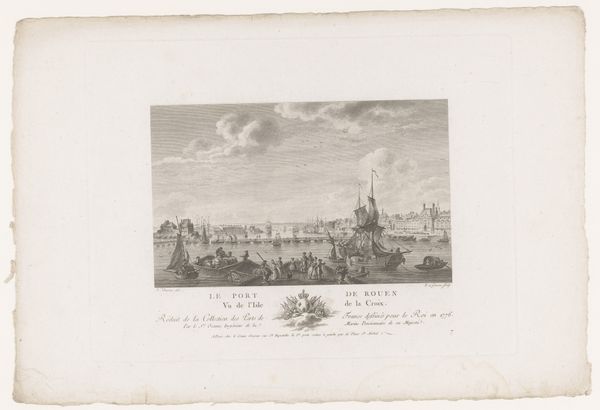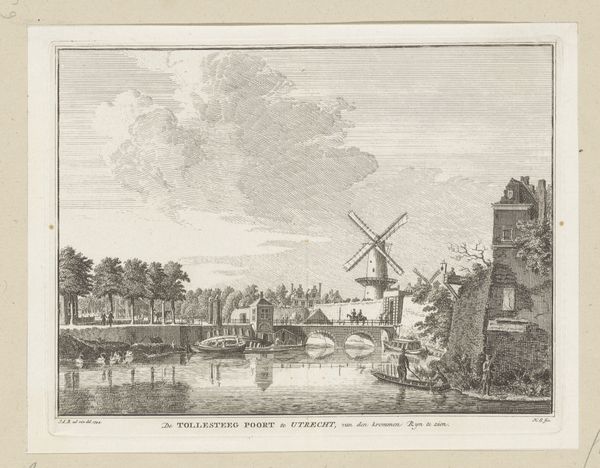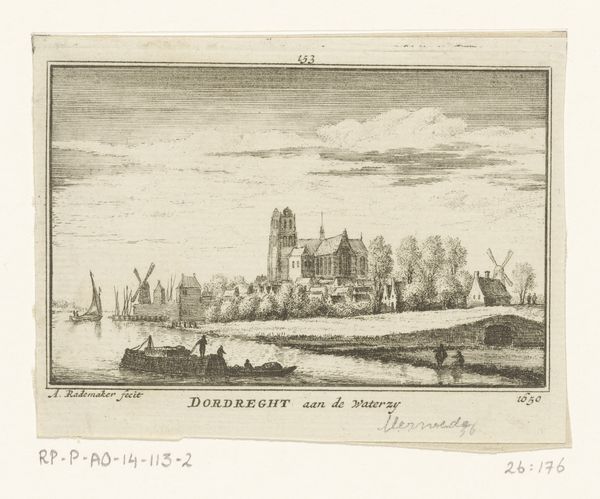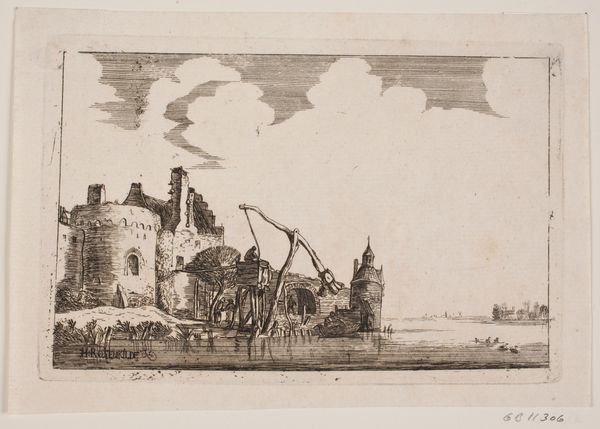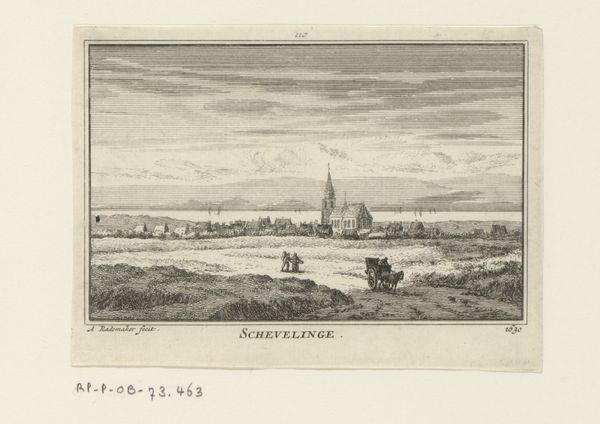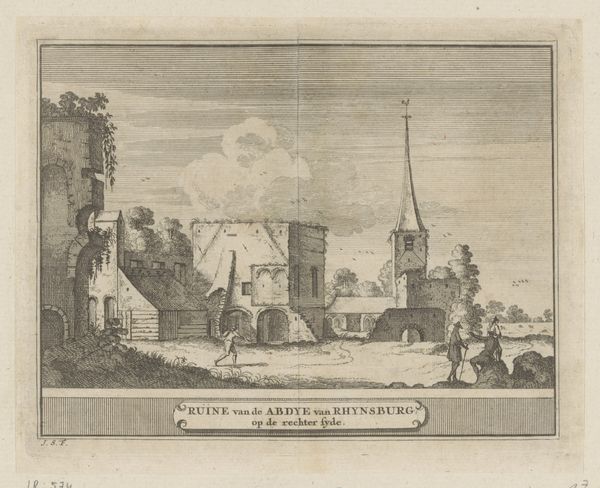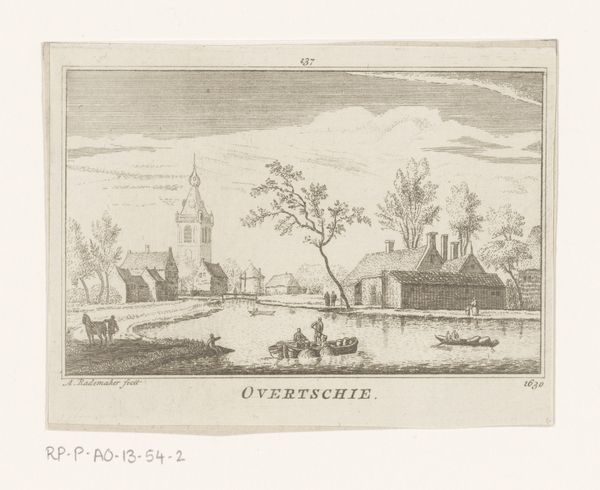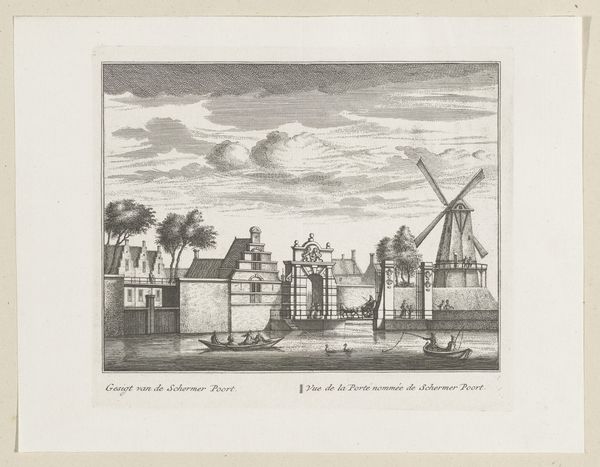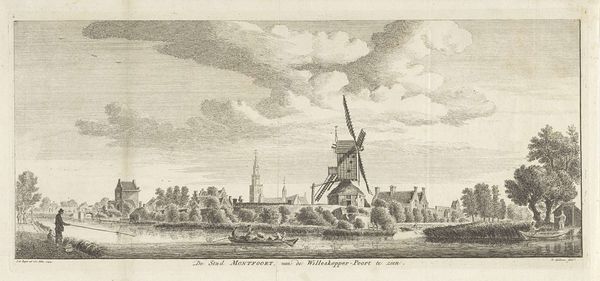
Dimensions: height 86 mm, width 108 mm
Copyright: Rijks Museum: Open Domain
Curator: This is "View of Biervliet," a print made sometime between 1746 and 1792. The artist is Hendrik Spilman. Editor: Hmm, it's a quiet scene. A little melancholic, maybe? The shading reminds me of dawn breaking over the town. Curator: The composition is fascinating when viewed through the lens of landscape art’s evolving role within civic identity. Look how the city is portrayed—the church spire and windmill prominently punctuate the skyline, asserting symbols of faith and industry. And consider Biervliet's location, historically positioned as a strategic port. This image becomes less about the vista and more about asserting communal pride. Editor: So it’s less ‘Wish you were here!’ and more ‘Here we ARE!’? I like that. There's something very grounding about how the town seems almost hugged by that protective wall. Reminds me of childhood forts, safety amidst a bigger world. Curator: Exactly! The choice of print as a medium is also worth noting. Its reproducibility speaks to broader accessibility during a time of expanding print culture. We also can’t dismiss the influence of Baroque style. Editor: Baroque, huh? Even in a seemingly humble cityscape, there's that sense of grandeur trying to peek through. Maybe in the sheer detail, like each tiny brick in the wall. Or is that just me getting carried away? Curator: Not at all. It also brings questions of power and class. Who are the figures leisurely strolling by? Are they inhabitants, tourists? Their presence and absence—who is visible and who isn’t—opens dialogues on representation within the evolving urban sphere. Editor: I get caught up in those clouds. They take up half the print, and somehow, all those careful lines give a feeling of enormous weight, but also… freedom? Curator: A perfect duality to reflect upon! Thanks to Hendrik Spilman, we can experience Biervliet not just as a place, but a moment in time—shaped by economic forces and societal ideals. Editor: And, dare I say, a dash of good old melancholy? I see that lone windmill and instantly feel like writing a poem about small-town dreams. This has given me a new way of understanding things.
Comments
No comments
Be the first to comment and join the conversation on the ultimate creative platform.



